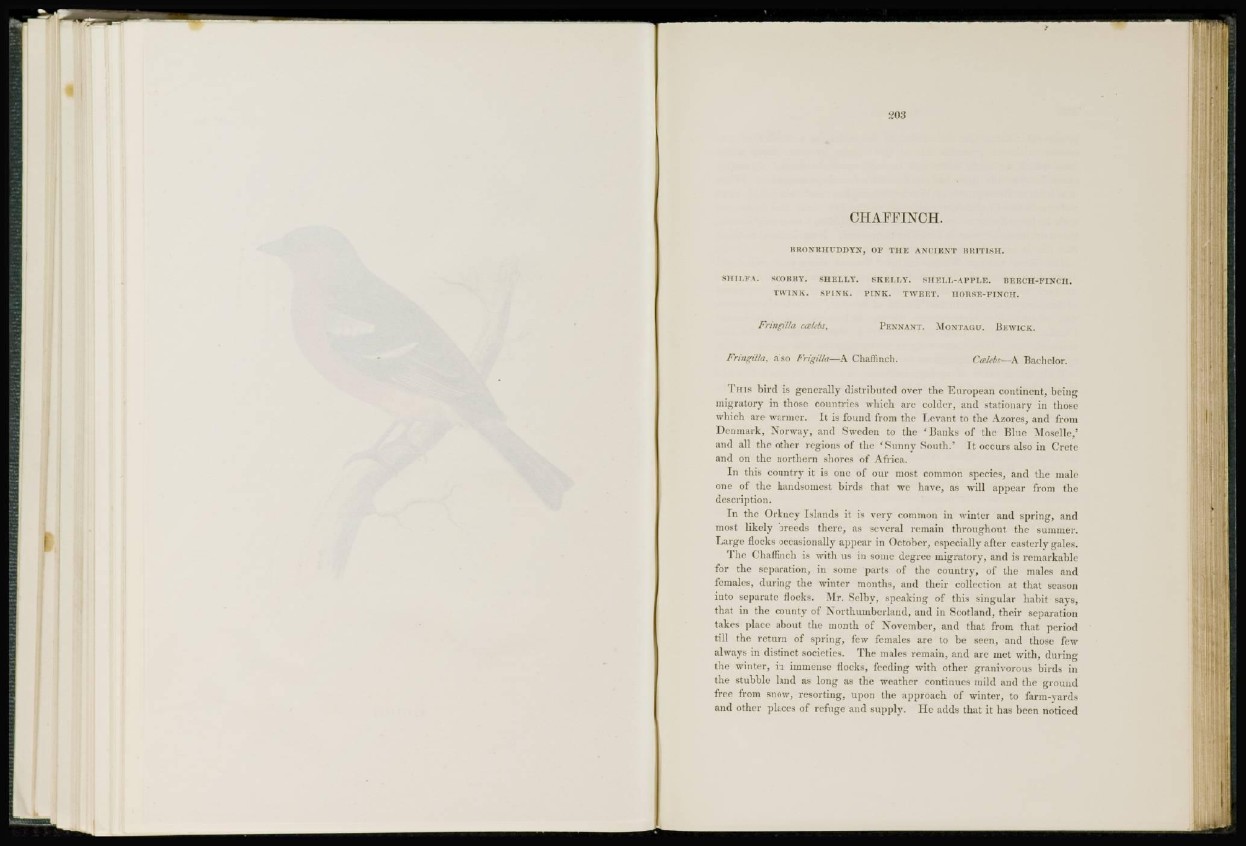
CHAFFINCH.
BRONRHUDDYN, OF THE ANCIENT BRITISH.
SHI I.FA. BCOBBT. SHELLY. SKELLY. SH ELL- MM'LE. BEECH-FINCH,
TWINK. SPINK. PINK. TWEET. HORSE-FINCH.
Fringilia ccelebs, PENNANT. MONTAGU. BEWICK.
Fringilla, also FrigUla—A Chaffinch. Calebs—A Bachelor.
Tins bird is generally distributed over the European continent, being
migratory in those countries which are colder, and stationary in those
which are warmer. It is found from the Levant to the Azores, and from
Denmark, Norway, and Sweden to the 'Banks of the Blue Moselle,'
and all the other regions of tin1 'Sunny South.' Tt occurs also in Crete
and on the northern shores of Africa.
In this country it is one of our most common species, and the nude
one of the handsomest birds that we have, as will appear from the
description.
In the Orkney Islands it is very common in winter and spring, and
most likely breeds there, as several remain throughout the summer.
Large flocks occasionally appear in October, especially after easterly gales.
The Chaffinch is with us ia sonic degree migratory, and is remarkable
for the separation, in some parts of the country, of tin; males and
females, during the winter months, and their collection at that season
into separate flocks. Mr. Selbv, speaking of this singular habit says,
that in the county of Northumberland, and in Scotland, their separation
takes place about the month of November, and that from that period
till the return of spring, few females are to be seen, and those few
always in distinct societies. The males remain, and are met with, during
the winter, in immense flocks, feeding with other granivorous birds in
the stubble land as long as the weather continues mild and the ground
free from snow, resorting, upon the approach of winter, to farm-\ards
and other places of refuge and supply. He adds that it has been noticed